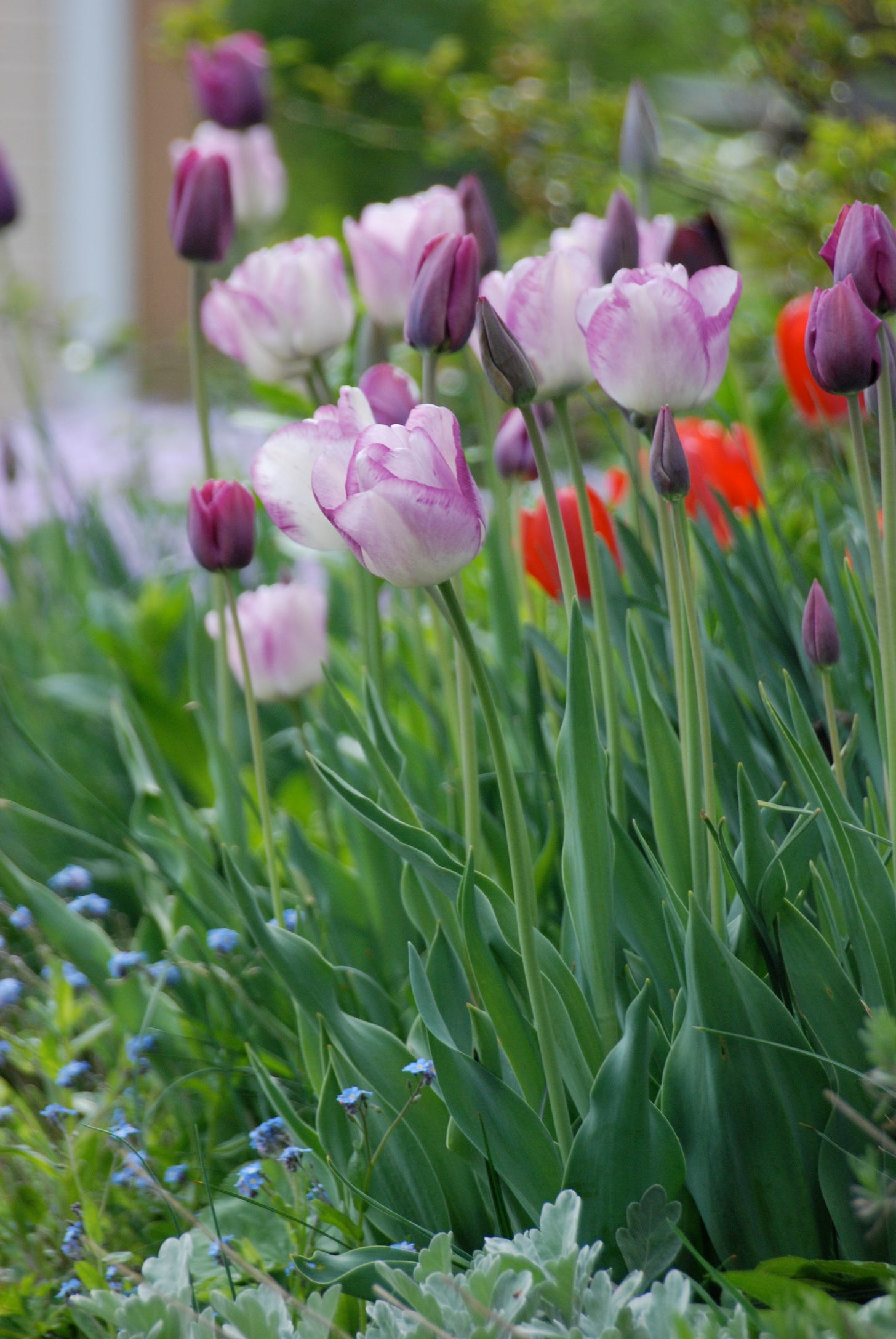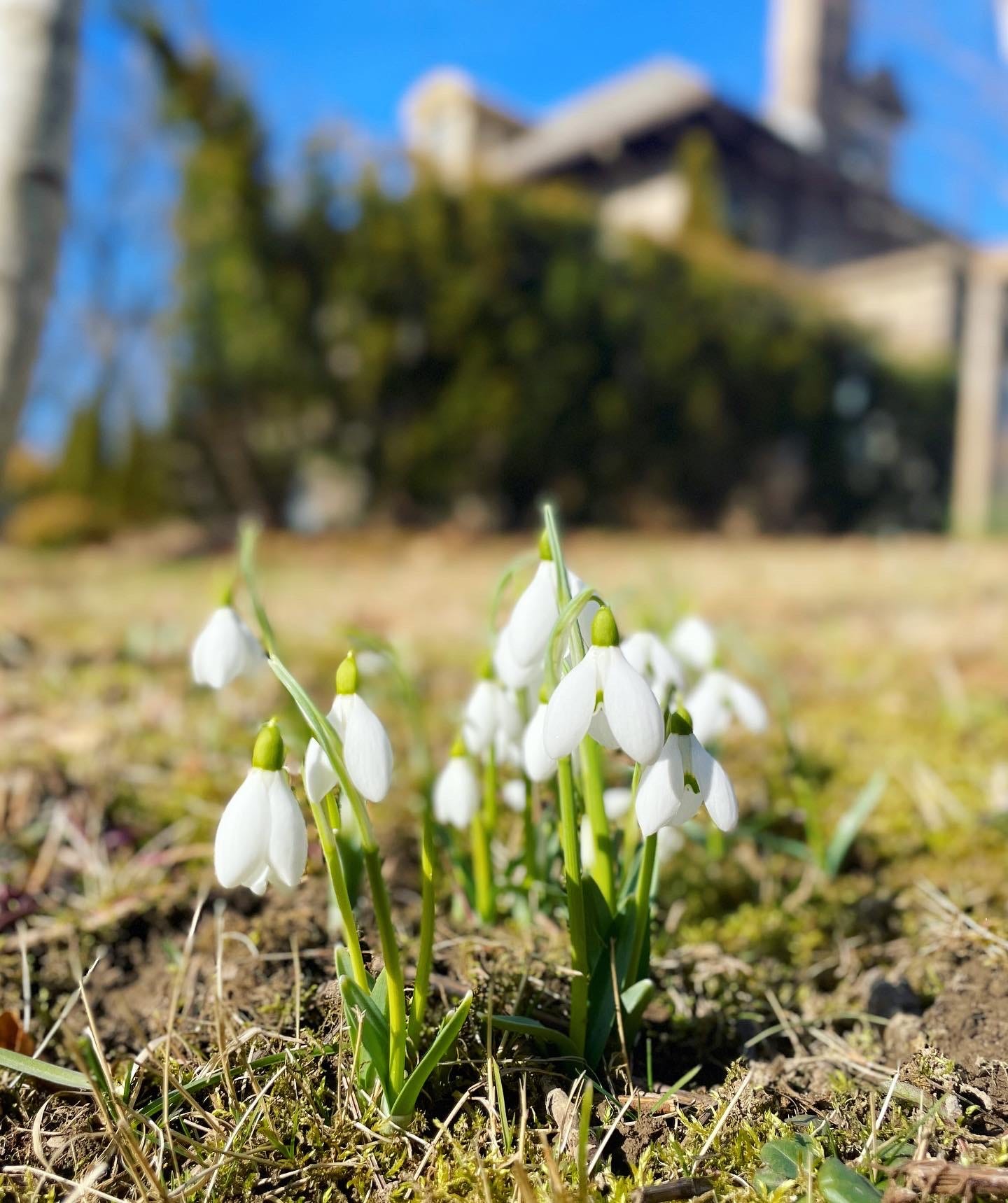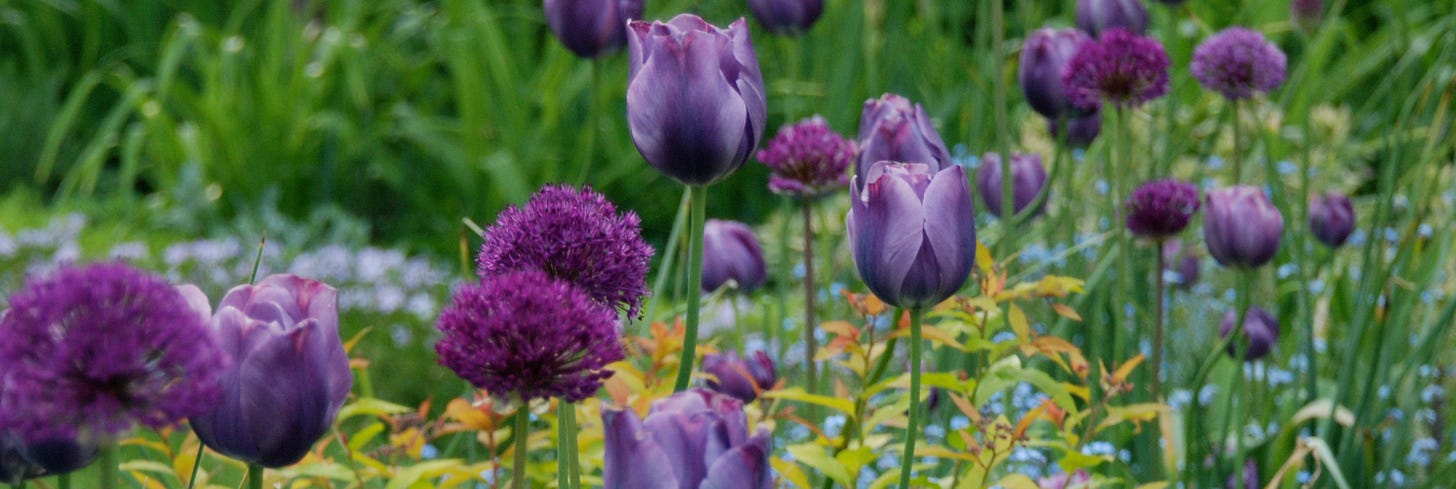
Spring Expectations
The past few weeks I’ve been talking a lot about fall & winter gardening. But at some point during the next few months, our ground will freeze solid and a foot of snow will cover the earth. This frozen world will limit my winter “work” to short walks around the garden in snow boots. While these winter walks are wonderful for planning, they do tend to drag on month after month here north of Pittsburgh. It is much easier to endure multiple months of snow when I know that there are hundreds of little flowers waiting to spring up. Bulbs planted in October and November are often already growing and sending up shoots on a mild January day. This treasure hunt for the first snowdrops is, for me, an important part of expectancy as spring breaks into winter’s stronghold.
Lessons from Dixter’s plantings
For the last 20 years, I’ve been obsessed with the bulb plantings at Great Dixter House & Gardens. When I think about what I have been able to achieve as far as bulb designs, the use of bulbs at Dixter has had the biggest influence on me. The best descriptions of Dixter’s plantings can be found in Christopher Lloyd’s classic book, Succession Planting for Year-Round Pleasure. This book may include plants that you cannot grow in your own garden, but that doesn’t matter as it is a complete explanation of how you can put different types of plants together - including bulbs. One my very favorite garden books of all time.

Here are several important pieces of advice I have about planning your spring/summer bulb plantings:
Plant each bulb with other plants
Though bulbs are often the feature, be sure they have other diverse plant partners to set them in context.
Bulb plantings will usually look better if they are not just bulbs, and they will work for longer if you use multiple varieties of bulbs together in one area.
Keep reading with a 7-day free trial
Subscribe to Julie Witmer Gardens Newsletter to keep reading this post and get 7 days of free access to the full post archives.







